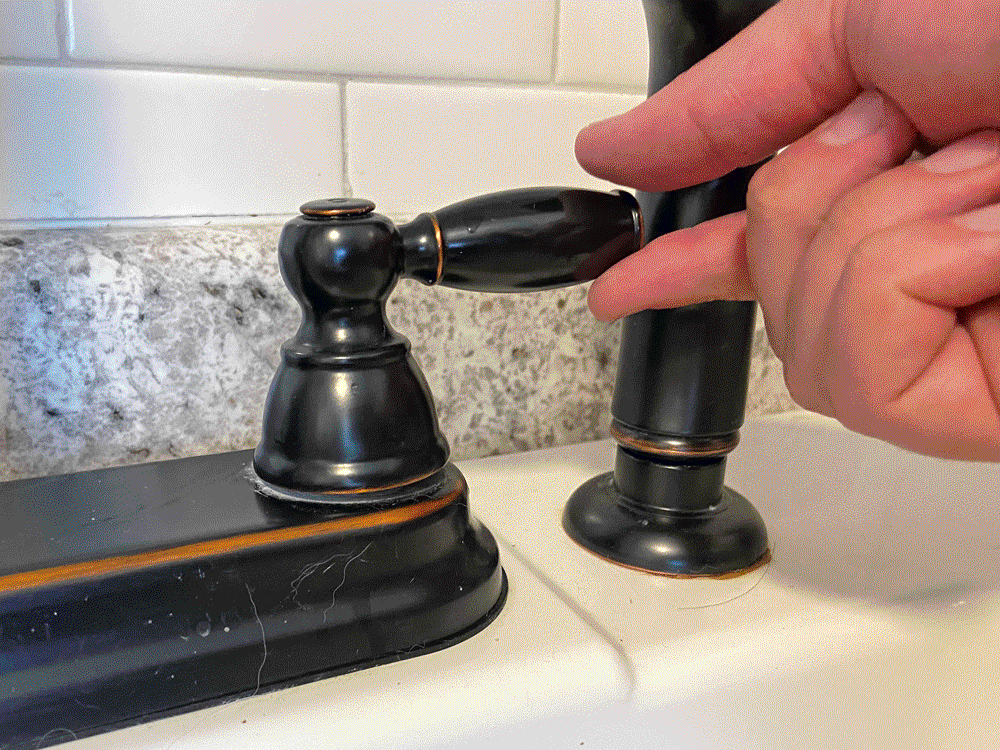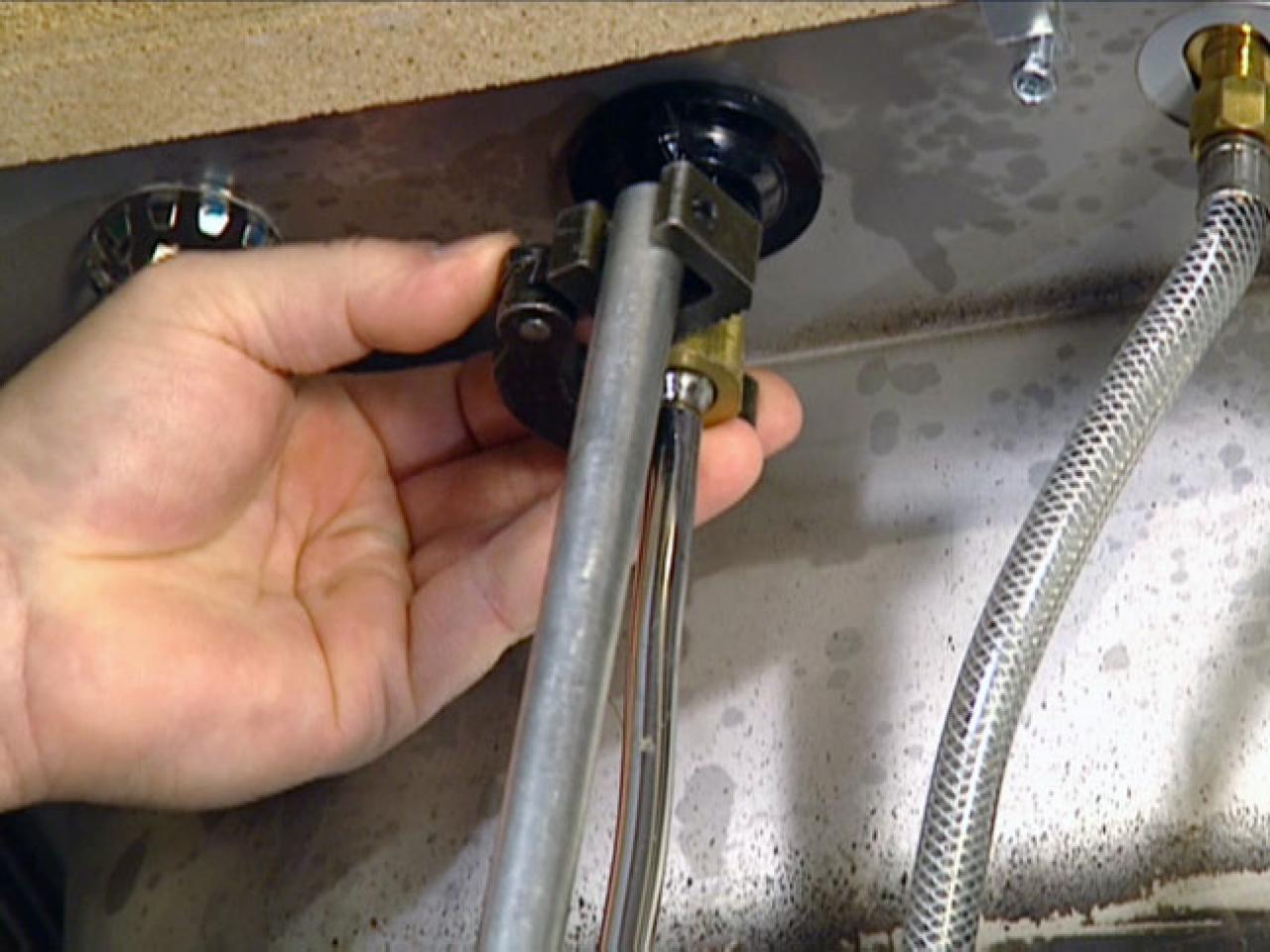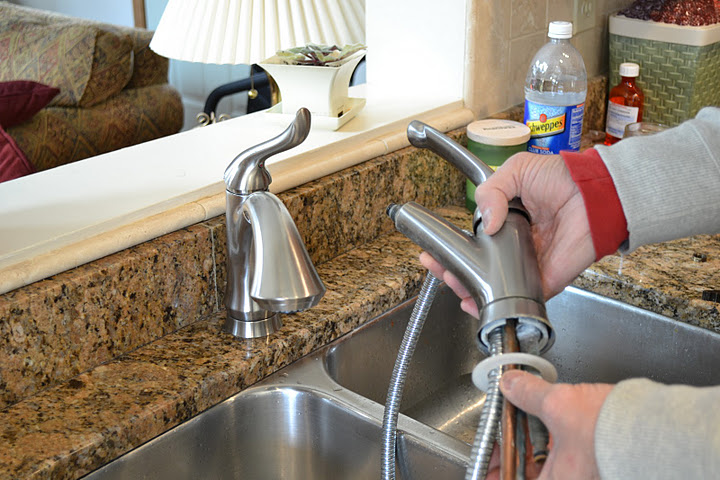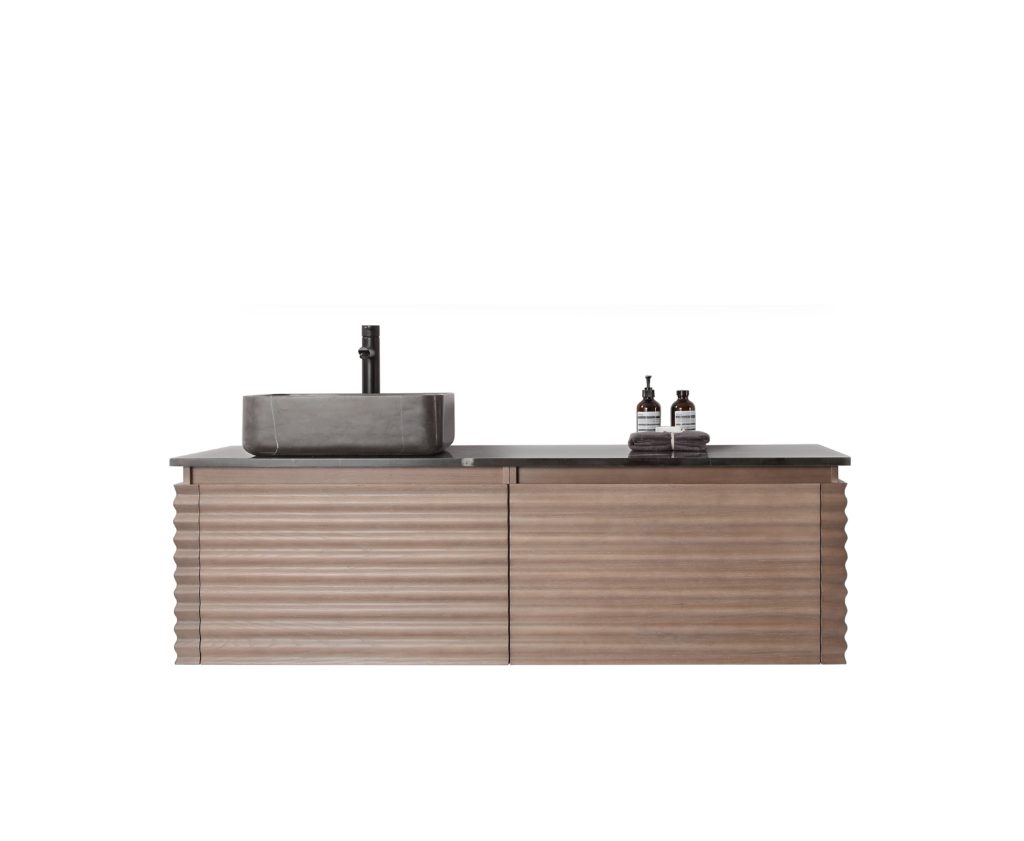One of the most frustrating things that can happen in a kitchen is a broken sink faucet. Suddenly, you're unable to wash dishes or fill pots with water. It can be tempting to panic and call a plumber right away, but don't worry – there are steps you can take to fix a broken kitchen sink faucet on your own. The first thing you'll need to do is determine the cause of the breakage. This will help you determine the best course of action for fixing it. Here are some common causes of a broken kitchen sink faucet:How to Fix a Broken Kitchen Sink Faucet
1. Normal wear and tear – Over time, faucets can become worn out from frequent use. The constant turning and pulling on the handle can cause internal parts to wear out, leading to a broken faucet. 2. Loose or corroded parts – If your faucet handle is loose or difficult to turn, it could be due to loose or corroded parts. This can also lead to a broken faucet if not addressed promptly. 3. Improper installation – If your faucet was not installed correctly, it may break sooner than expected. It's important to hire a professional or follow installation instructions carefully to avoid this issue. 4. Hard water buildup – If you have hard water, mineral deposits can build up on the internal parts of your faucet, causing it to become clogged or break. 5. Physical damage – Accidents happen, and your faucet may break due to physical damage from dropping something on it or accidentally hitting it with a pot or pan.Common Causes of a Broken Kitchen Sink Faucet
If your kitchen sink faucet has stopped working, there are a few DIY solutions you can try before calling a professional: 1. Tighten loose parts – If your faucet handle is loose, tighten any visible screws or nuts to see if that solves the problem. If not, you may need to replace the handle or other internal parts. 2. Clean the aerator – The aerator is the small mesh screen at the end of your faucet. If it becomes clogged with mineral deposits, it can cause your water flow to slow down or stop completely. Remove the aerator and clean it with a mixture of equal parts white vinegar and water. 3. Replace O-rings or gaskets – If your faucet is leaking, it may be due to worn or damaged O-rings or gaskets. These can be easily replaced with a new one from your local hardware store. 4. Check for mineral buildup – If you have hard water, mineral buildup can cause your faucet to clog or stop working. Use a mixture of equal parts white vinegar and water to soak and remove any buildup.DIY Solutions for a Broken Kitchen Sink Faucet
If the DIY solutions do not fix your broken kitchen sink faucet, it may be time to call a professional plumber. They will have the knowledge and tools to properly diagnose and repair the issue. Some common professional repair options for a broken kitchen sink faucet include: 1. Replacing internal parts – If a specific part of your faucet is broken, a plumber may be able to replace just that part instead of the entire faucet. 2. Replacing the faucet – If your faucet is old or beyond repair, a plumber may recommend replacing it with a new one. This is also a good option if you want to upgrade to a more modern or efficient faucet. 3. Fixing installation errors – If your faucet was not installed correctly, a plumber can fix any errors to prevent future breakage.Professional Repair Options for a Broken Kitchen Sink Faucet
While some causes of a broken kitchen sink faucet are out of our control, there are steps you can take to prevent it from happening in the future: 1. Regular maintenance – Just like any other appliance, your faucet needs regular maintenance to ensure it continues working properly. This can include cleaning and checking for any loose or corroded parts. 2. Avoid using excessive force – Avoid pulling or turning the faucet handle with excessive force, as this can cause internal parts to wear out quicker. 3. Install a water softener – If you have hard water, consider installing a water softener to prevent mineral buildup in your faucet and other appliances.Preventing a Broken Kitchen Sink Faucet
It's always better to catch a problem before it becomes a major issue. Here are some signs that your kitchen sink faucet may be on the verge of breaking: 1. Leaking or dripping – If you notice your faucet is leaking or dripping, it could be a sign of a larger issue that needs to be addressed before it breaks. 2. Difficulty turning on or off – If your faucet handle is becoming more difficult to turn, it could be a sign that internal parts are wearing out and need to be replaced. 3. Strange noises – If your faucet is making strange noises when turning it on or off, it could be a sign of mineral buildup or other issues that can lead to a broken faucet.Signs that Your Kitchen Sink Faucet is About to Break
If your kitchen sink faucet is beyond repair and you need to replace it, you may be able to save money by just replacing certain parts instead of the entire faucet. Here are some common parts that may need to be replaced: 1. Handles – Handles can become loose or break over time, but they can be easily replaced with a new one from your local hardware store. 2. Cartridge or valve – The cartridge or valve is the internal part that controls the water flow. If these become damaged, your faucet will need to be replaced. 3. Aerator – The aerator is the mesh screen at the end of your faucet that helps regulate water flow. If it becomes clogged or damaged, it can be easily replaced.Replacing Parts on a Broken Kitchen Sink Faucet
When it's time to replace your broken kitchen sink faucet, here are some things to consider: 1. Style – You'll want to choose a faucet that not only functions well but also complements the style of your kitchen. 2. Functionality – Consider the different features you want in a faucet, such as a pull-down sprayer or touchless technology. 3. Quality – A higher quality faucet may cost more upfront, but it will likely last longer and save you money on repairs in the long run. 4. Installation – If you're not confident in your DIY skills, make sure to choose a faucet that is easy to install or hire a professional to do it for you.How to Choose a New Kitchen Sink Faucet
To keep your kitchen sink faucet in good working condition, here are some tips for regular maintenance: 1. Clean regularly – Use a mild soap and water to clean your faucet regularly to prevent mineral buildup and keep it looking like new. 2. Check for leaks – Keep an eye out for any leaks or drips and address them promptly to prevent further damage. 3. Don't use harsh chemicals – Avoid using harsh chemicals or abrasive cleaners on your faucet, as they can cause damage. 4. Handle with care – Be gentle when turning your faucet on and off to avoid putting too much stress on internal parts. By following these tips and properly maintaining your kitchen sink faucet, you can prevent breakage and save yourself the hassle and expense of dealing with a broken faucet. Remember, if you do encounter a broken kitchen sink faucet, don't panic – try the DIY solutions first and if those don't work, call a professional for help. With the right care, your kitchen sink faucet can last for many years to come.Tips for Maintaining Your Kitchen Sink Faucet to Prevent Breakage
Troubleshooting a Broken Kitchen Sink Faucet

Possible Causes of a Broken Kitchen Sink Faucet
 If you have ever experienced the frustration of a broken kitchen sink faucet, you know the impact it can have on your daily routine. Suddenly, tasks like washing dishes or filling up a pot of water become a hassle, and you may find yourself feeling overwhelmed and unsure of what to do next. But fear not, as this common household issue can be easily resolved with a little troubleshooting.
One of the most common causes of a broken kitchen sink faucet is wear and tear over time. With frequent use, the parts of a faucet can become loose or worn out, causing it to break off. Another possible cause is excessive force or pressure applied to the faucet, such as accidentally bumping into it or using it to hang heavy objects. In some cases, the faucet may have been poorly installed or made with low-quality materials, making it more prone to breakage.
If you have ever experienced the frustration of a broken kitchen sink faucet, you know the impact it can have on your daily routine. Suddenly, tasks like washing dishes or filling up a pot of water become a hassle, and you may find yourself feeling overwhelmed and unsure of what to do next. But fear not, as this common household issue can be easily resolved with a little troubleshooting.
One of the most common causes of a broken kitchen sink faucet is wear and tear over time. With frequent use, the parts of a faucet can become loose or worn out, causing it to break off. Another possible cause is excessive force or pressure applied to the faucet, such as accidentally bumping into it or using it to hang heavy objects. In some cases, the faucet may have been poorly installed or made with low-quality materials, making it more prone to breakage.
Steps to Fix a Broken Kitchen Sink Faucet
 If your kitchen sink faucet has broken off, there are a few steps you can take to troubleshoot and fix the issue. The first thing you should do is turn off the water supply to your faucet. This will prevent any further damage and make it easier to work on the faucet. Next, carefully inspect the faucet to determine the cause of the breakage. If the faucet is simply loose or has a loose part, it may be as simple as tightening a screw or replacing a washer. However, if the faucet is completely broken, you may need to replace it entirely.
Pro tip:
If you are unsure of how to fix a broken faucet, it is always best to call a professional plumber to avoid causing further damage or injury.
If your kitchen sink faucet has broken off, there are a few steps you can take to troubleshoot and fix the issue. The first thing you should do is turn off the water supply to your faucet. This will prevent any further damage and make it easier to work on the faucet. Next, carefully inspect the faucet to determine the cause of the breakage. If the faucet is simply loose or has a loose part, it may be as simple as tightening a screw or replacing a washer. However, if the faucet is completely broken, you may need to replace it entirely.
Pro tip:
If you are unsure of how to fix a broken faucet, it is always best to call a professional plumber to avoid causing further damage or injury.
Preventing Future Faucet Breakage
 To prevent your kitchen sink faucet from breaking off in the future, it is important to take proper care and maintenance of it. Regularly clean and inspect your faucet for any signs of wear and tear. Avoid using excessive force or pressure on the faucet, and refrain from using it to hang heavy objects. Consider investing in a high-quality faucet that is made with durable materials and properly installed by a professional.
In conclusion, a broken kitchen sink faucet can be a frustrating and inconvenient issue, but with proper troubleshooting and maintenance, it can be easily resolved. Remember to turn off the water supply, inspect the faucet for the cause of the breakage, and call a professional if needed. With these tips, you can keep your kitchen sink faucet in top working condition and avoid any future mishaps.
To prevent your kitchen sink faucet from breaking off in the future, it is important to take proper care and maintenance of it. Regularly clean and inspect your faucet for any signs of wear and tear. Avoid using excessive force or pressure on the faucet, and refrain from using it to hang heavy objects. Consider investing in a high-quality faucet that is made with durable materials and properly installed by a professional.
In conclusion, a broken kitchen sink faucet can be a frustrating and inconvenient issue, but with proper troubleshooting and maintenance, it can be easily resolved. Remember to turn off the water supply, inspect the faucet for the cause of the breakage, and call a professional if needed. With these tips, you can keep your kitchen sink faucet in top working condition and avoid any future mishaps.








































/header-16x19-image-640w-853h.jpg)


























